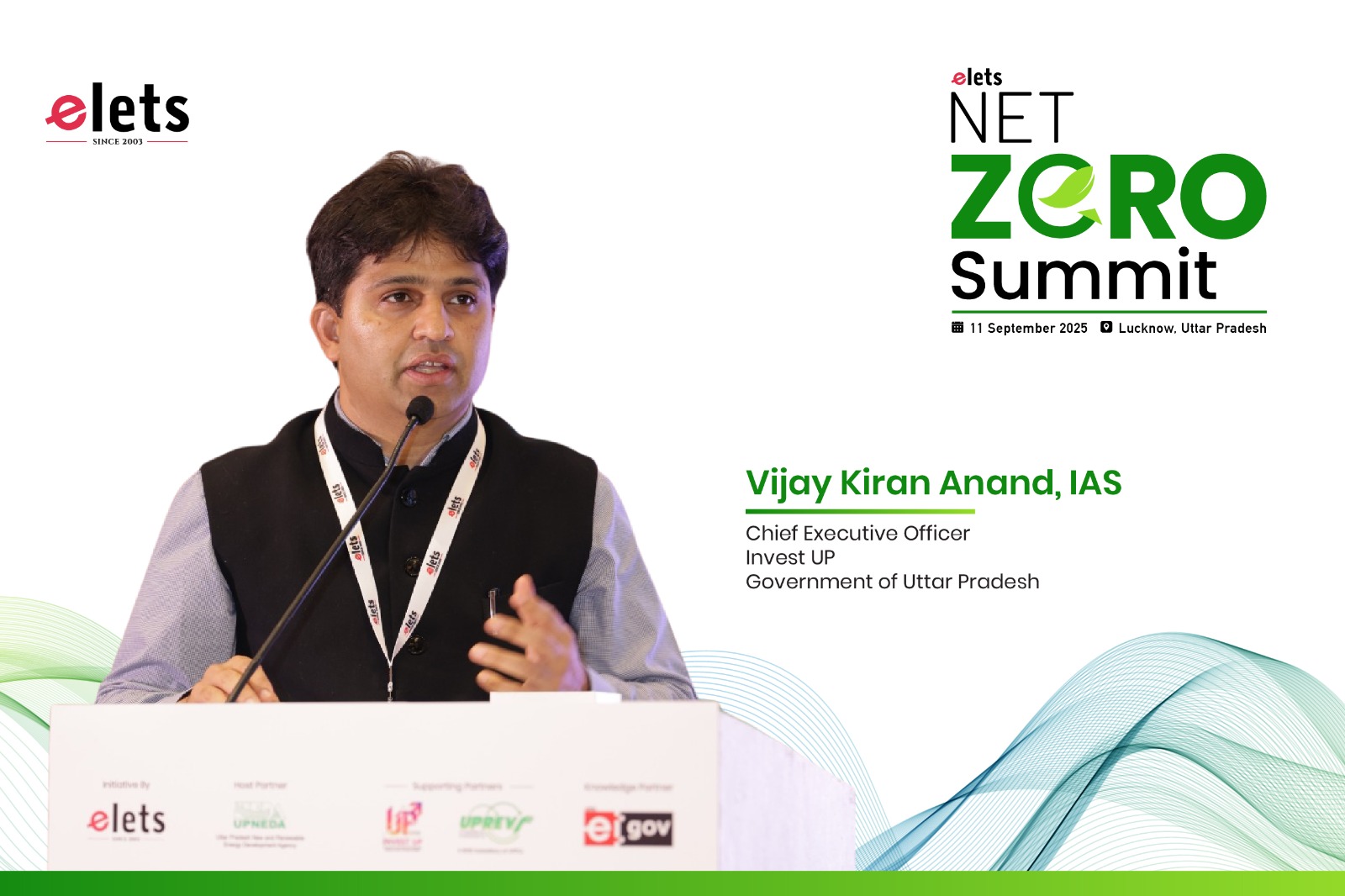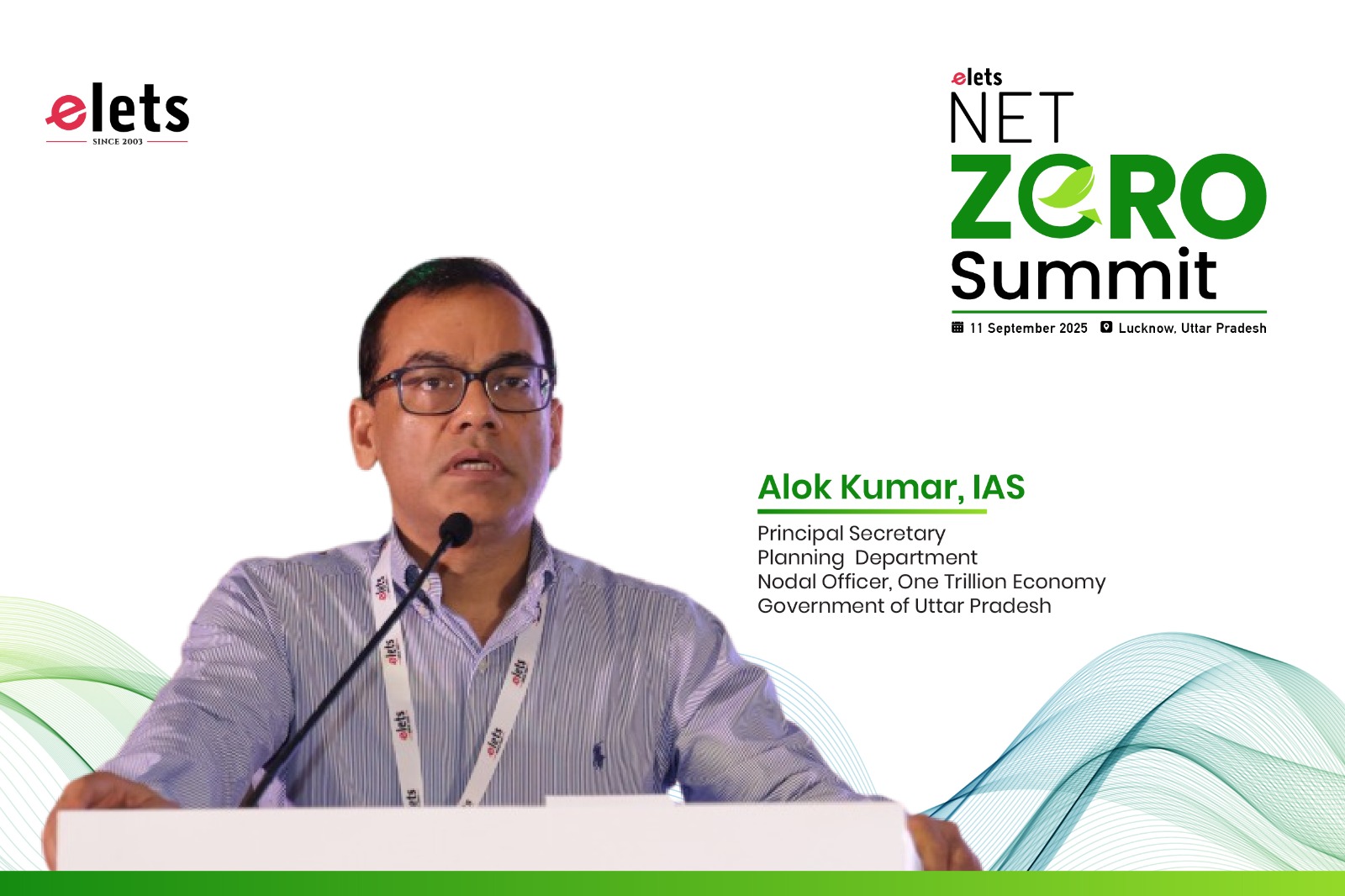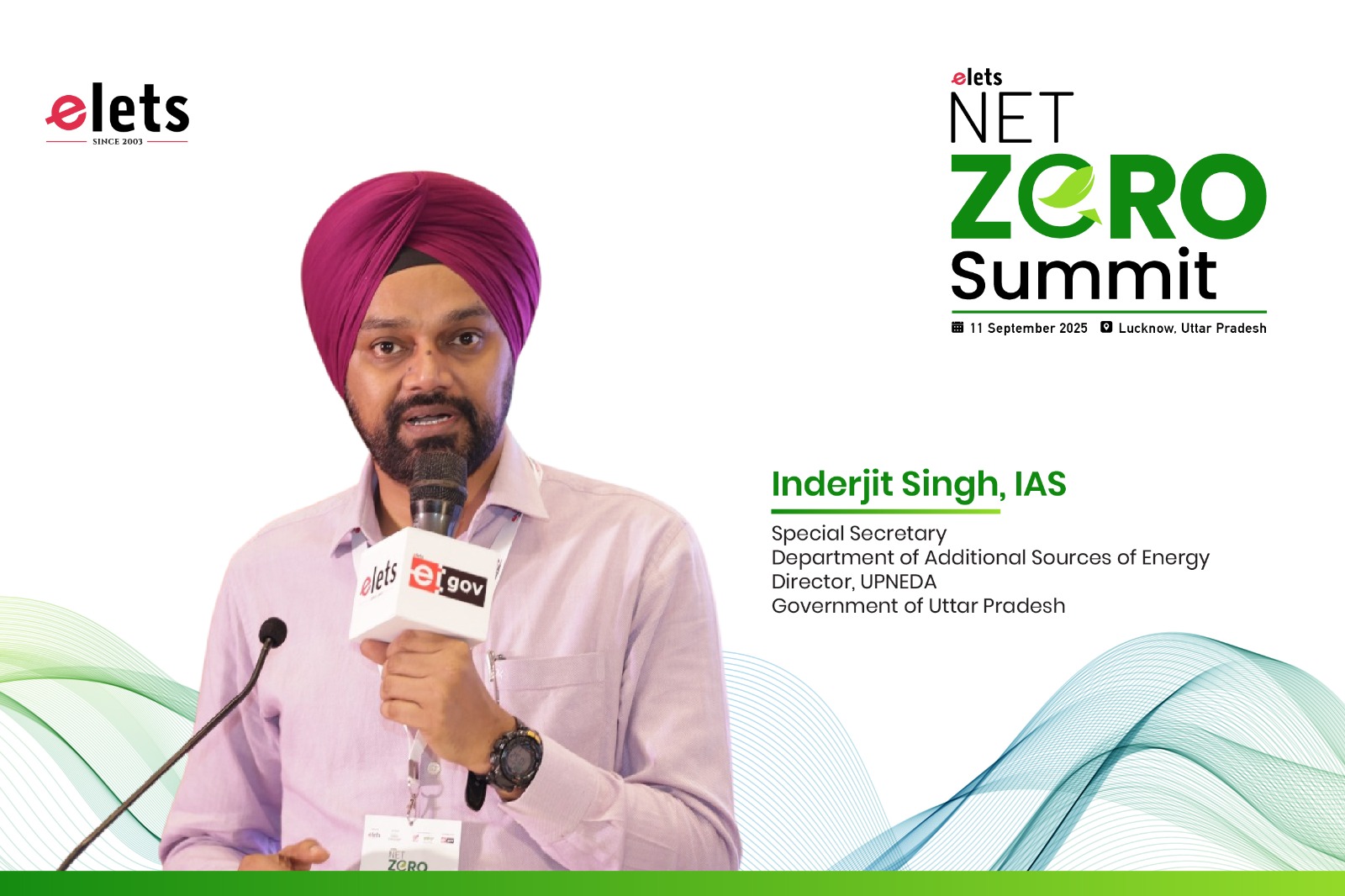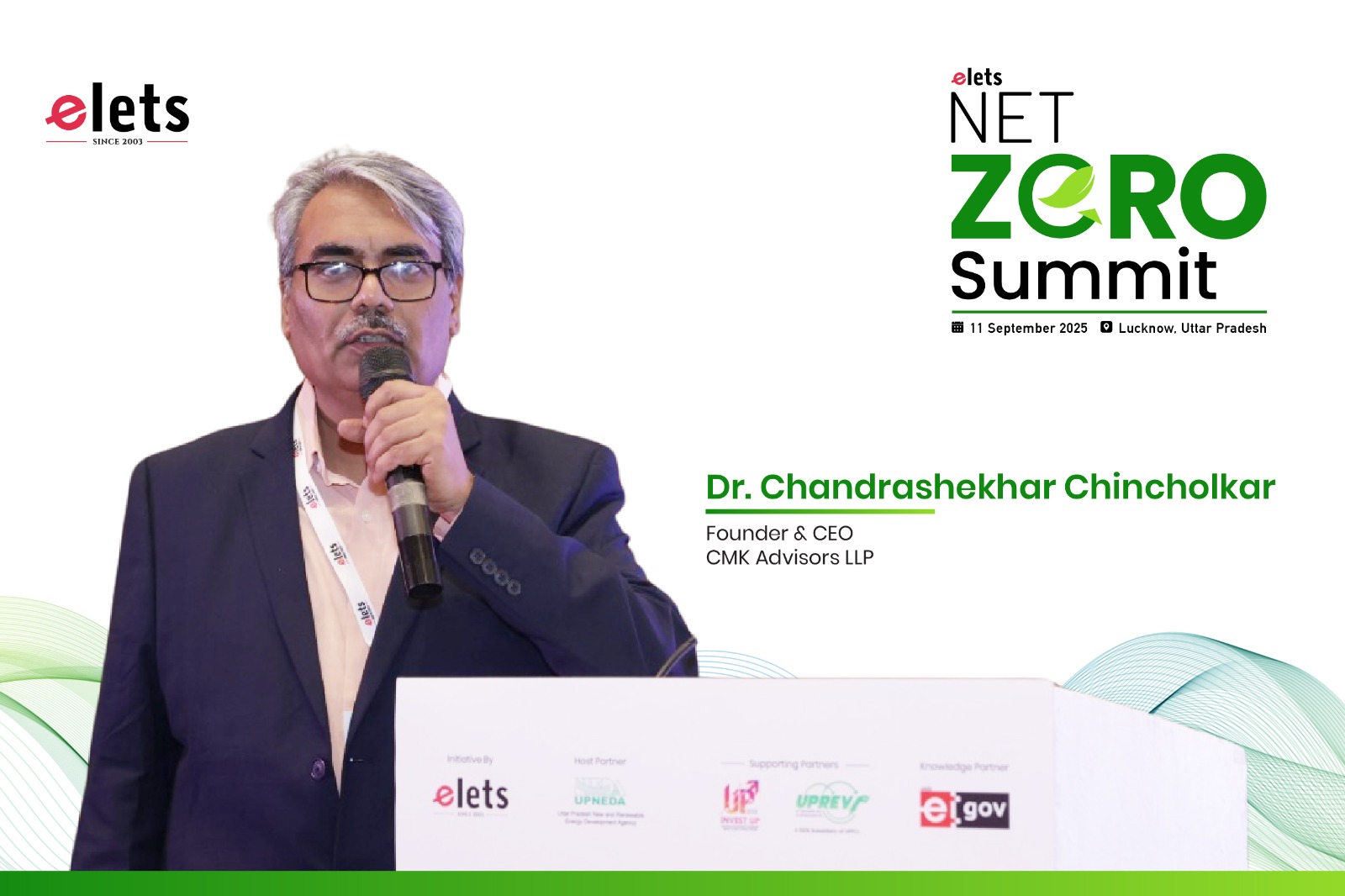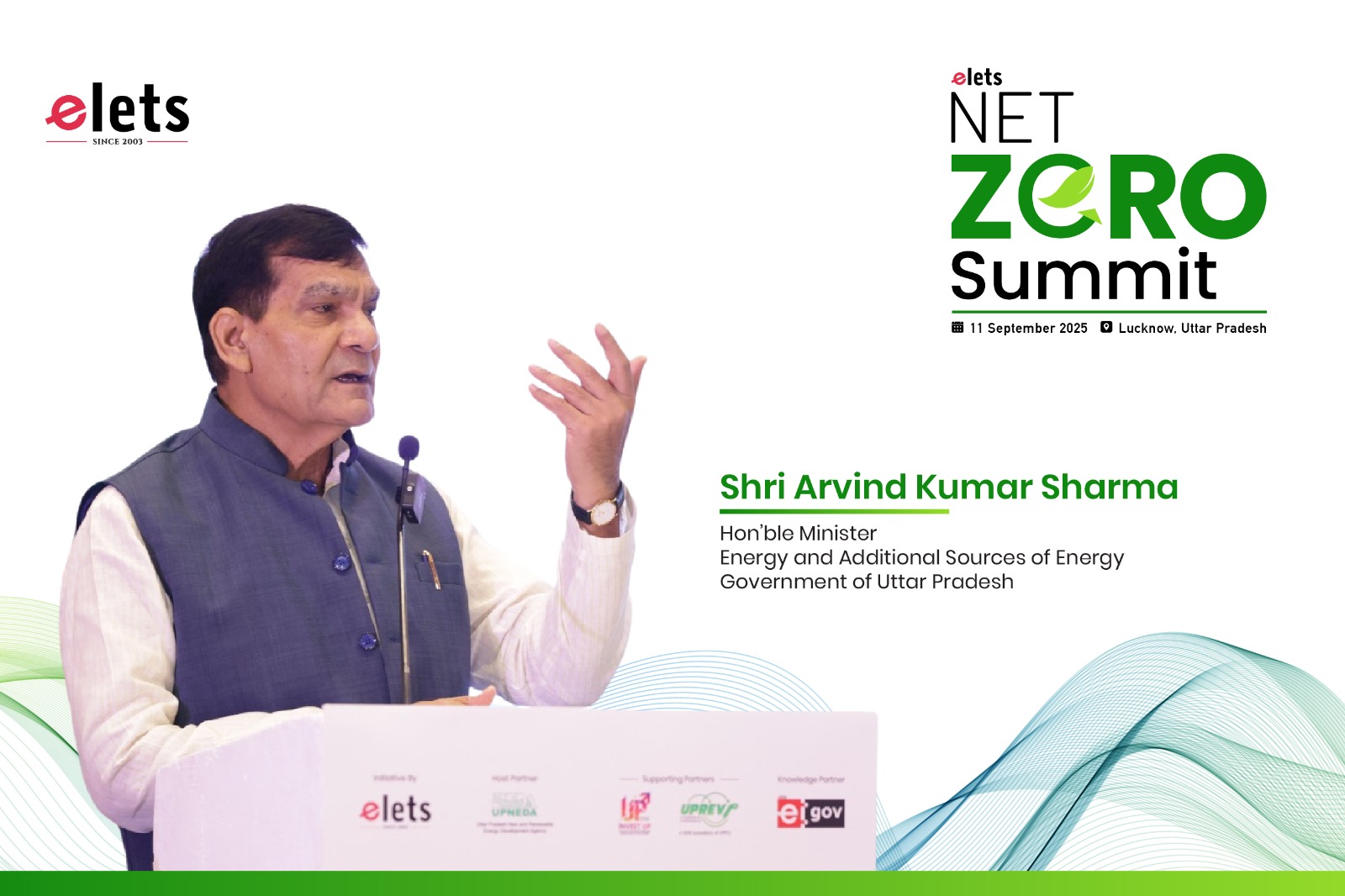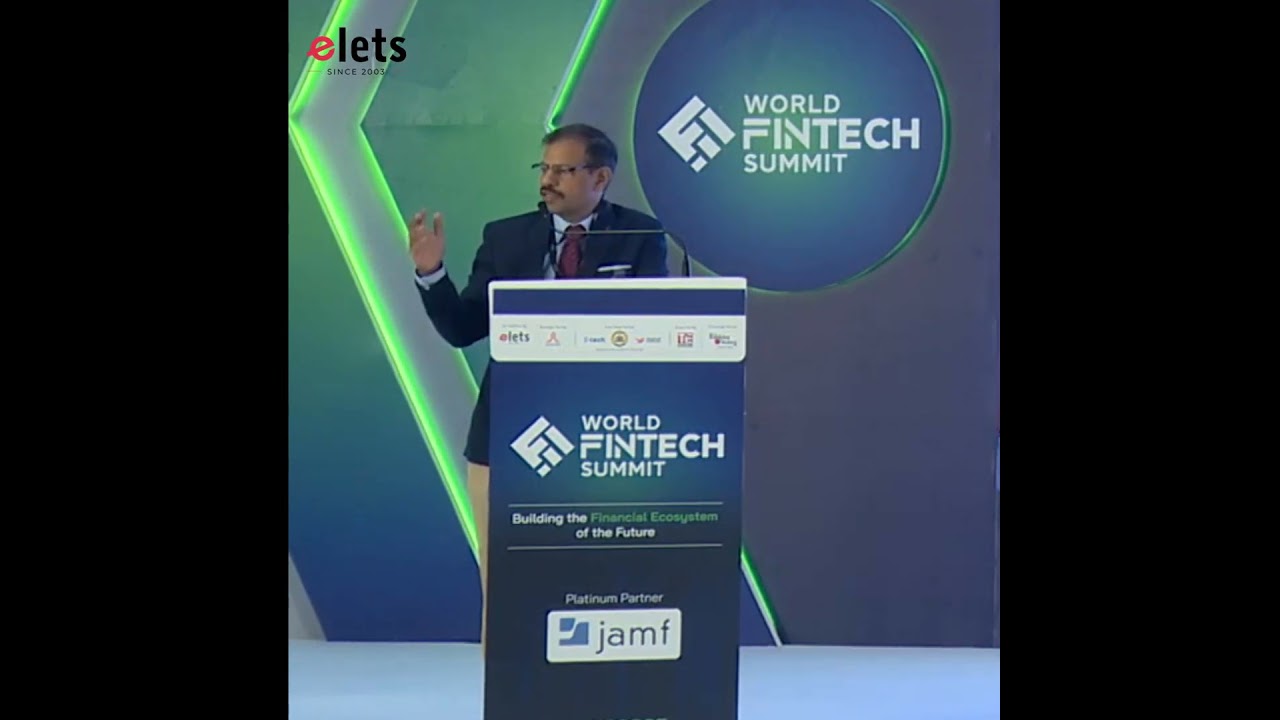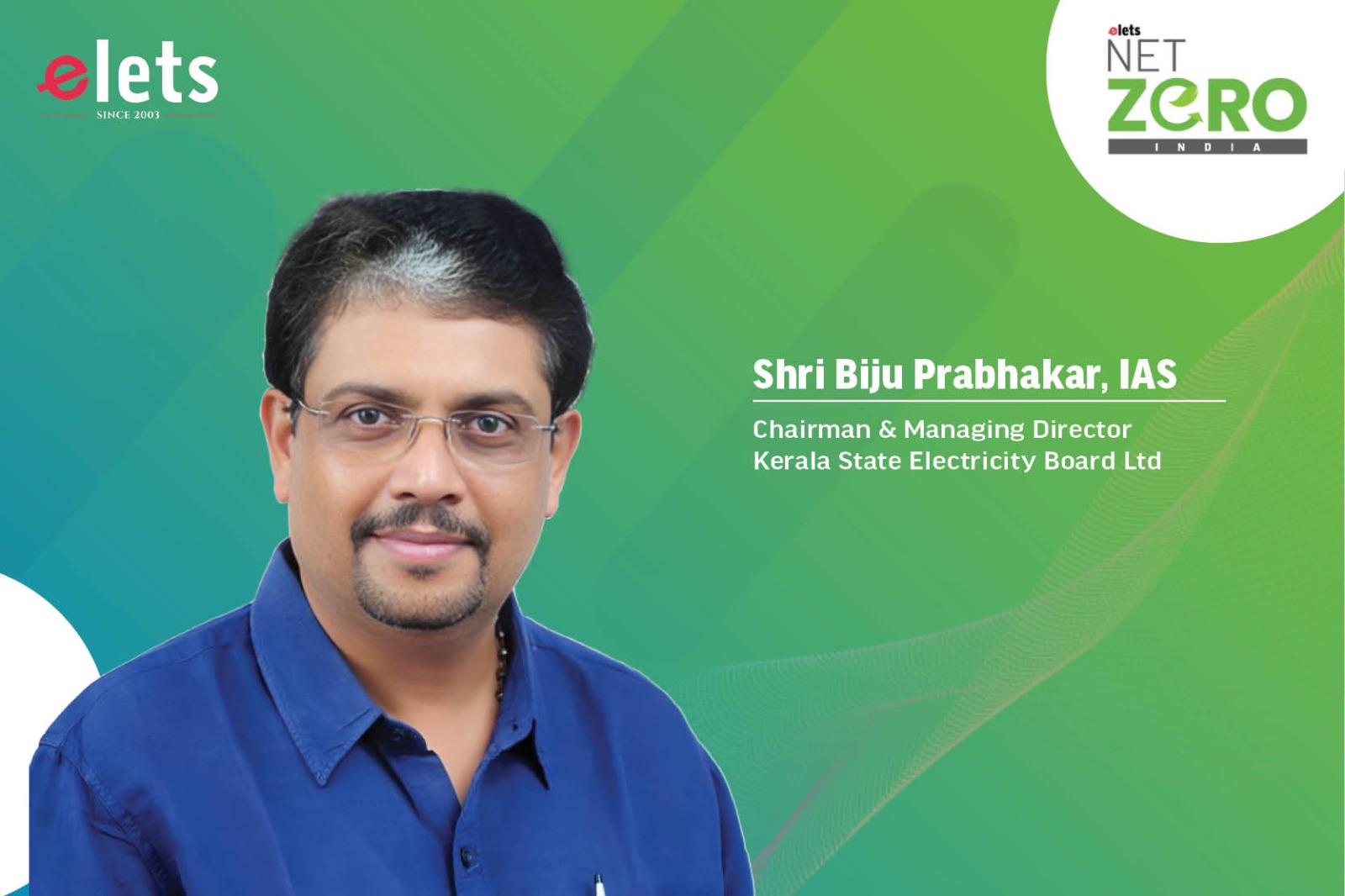
Kerala State Electricity Board Ltd. (KSEB) is spearheading multiple initiatives to enhance energy security, expand renewable energy, and modernize power infrastructure. With a focus on battery storage, solar and wind energy, and pumped storage projects, KSEB is aligning with India’s net-zero goals. Shri Biju Prabhakar, IAS, Chairman & Managing Director, Kerala State Electricity Board Ltd ., shares more about KSEB’s plans for the state’s energy ecosystem in an exclusive interview with Nisha Samant, Senior Assistant Editor of Elets News Network (ENN).
What are the key strategic initiatives currently being undertaken by KSEB to enhance Kerala’s energy security and meet growing power demands?
KSEB has been grappling with a severe power crisis for over a decade, with domestic production accounting for only about 30% of total demand. Peak demand in Kerala rises at a rate of approximately 10% each year. No major power projects are expected to be completed within the next five years. Currently, KSEB spends over 60% of its total turnover on power purchases, with approximately 13,000 crore spent last year. This figure may rise further if summer temperatures in Kerala exceed expectations.
To address this, we plan to implement battery storage systems as a short-term measure to store surplus solar electricity generated during the day, which can be released during evening peak hours (from 6 PM to 12 AM) when demand surges. Two tenders of 1000 MWh have already been floated. Pumped storage projects also present a viable solution, allowing us to use low-cost electricity generated during solar hours to pump water from the tailrace back into the reservoir of hydroelectric projects.
Another key initiative is the establishment of a dedicated marketing wing. Kerala is a leading state in solar electricity production, with approximately 35 MW added to its installed solar capacity every month. It is crucial for us to find markets across the country for this rapidly growing solar output. Additionally, we are working to identify reliable and affordable sources of power procurement for peak-hour needs.
With renewable energy gaining momentum, what steps is KSEB taking to achieve the state’s renewable energy targets, particularly in the solar, wind, and hydropower sectors?
At the heart of KSEB’s vision is the aggressive expansion of renewable energy. Hydropower forms the backbone of this effort, with several large-scale projects in the pipeline. The Idukki Golden Jubilee Hydroelectric Project, boasting a capacity of 800 MW, is one of the most significant initiatives, complemented by the 240 MW Letchmi Project and the 450 MW Sabarigiri Extension. Together, these projects are expected to contribute 1,500 MW of stable and reliable energy, supported by an investment of ₹12,000 crore. While these large projects provide a robust energy base, KSEB is also investing in small hydropower initiatives.
As mentioned earlier, KSEB is a leader in solar rooftop production, having surpassed 1,350 MW of installed capacity. Registrations under the PM Suryaghar scheme are rapidly increasing, with an additional 35 MW being added each month. KSEB has also initiated several rounds of discussions with the National Institute of Wind Energy (NIWE) to identify high-potential wind energy zones in the
How does KSEB plan to align with the Government of India’s vision for achieving net-zero carbon emissions by 2070? Are there state-specific timelines or goals?
Kerala’s energy landscape is undergoing a transformative phase, driven by the increasing demands of urbanisation, industrialisation, and electrification. The summer of 2024 marked a critical juncture, as electricity demand soared beyond the projections for 2027-28 outlined in the 20th Electric Power Survey of India. This surge, fueled by rising cooling requirements and the rapid adoption of electric vehicles, exposed vulnerabilities in the existing energy infrastructure.
Recognizing these challenges, KSEBL has crafted an ambitious vision to develop a resilient energy system capable of handling up to 10,000 MW of peak demand by 2030. This initiative aligns with Kerala’s broader aspirations of achieving 100% renewable energy by 2040 and carbon neutrality by 2050, supporting India’s national commitment to achieving net-zero carbon emissions by 2070.
The transition to renewable energy also involves leveraging Kerala’s significant solar and wind potential. Solar energy, a key pillar of the state’s renewable strategy, is set for substantial expansion. Current plans include the addition of 500 MW of capacity through both ground-mounted and floating solar installations, further enhancing Kerala’s solar portfolio, which already stands at 1,500 MW. Wind energy development is equally crucial, with projects targeting 500 MW of onshore capacity in areas such as Ramakkalmedu, Agali, and Pappanpara. Additionally, a 50 MW pilot offshore wind energy project is under consideration, signalling Kerala’s commitment to diversifying its renewable energy sources and reducing reliance on fossil fuels.
Energy storage is another cornerstone of KSEB’s strategy. Given the intermittent nature of renewable energy sources like solar and wind, advanced storage solutions are essential for maintaining grid stability and ensuring a reliable power supply. KSEB is prioritizing the deployment of Battery Energy Storage Systems (BESS), with a target capacity of 3,000 MWh. These systems will store surplus energy generated during periods of low demand and release it during peak hours, minimizing wastage and optimizing energy usage.
A flagship project in this domain is the 125 MW/500 MWh BESS facility in Mylatty, Kasargode District, supported by a 135 crore allocation under Viability Gap Funding (VGF) from the Government of India. Another 125 MW/500 MWh BESS project was tendered by NHPC in January 2025, again with VGF support of a similar magnitude, but under a CPSU component from the Union Government. Kerala will thus benefit from an initial ₹270 crore in VGF support.
Also Read :- Hydrogen solar & EVs India’s roadmap for Energy security
In parallel, Pumped Storage Projects (PSPs) are being developed to capitalize on Kerala’s unique geographical features. With a planned capacity of 3,330 MW, these projects will play a critical role in balancing energy supply and demand, further reducing the state’s reliance on conventional energy sources.
Can you elaborate on KSEB’s ongoing and upcoming infrastructure projects, especially in transmission and distribution networks, to minimize power losses?
KSEB has achieved remarkable success in reducing transmission and distribution (T&D) losses through a series of well-coordinated measures. Historically, T&D losses have been a significant challenge due to outdated infrastructure, power theft, and technical inefficiencies. To address these issues, KSEB has implemented a comprehensive plan that includes replacing ageing components, optimizing load management, and enhancing monitoring mechanisms.
Kerala is a leading state in solar electricity production, with approximately 35 MW added to its installed solar capacity every month. It is crucial for us to find markets across the country for this rapidly growing solar output. Additionally, we are working to identify reliable and affordable sources of power procurement for peak-hour needs.
One of the key strategies has been the replacement of old, undersized conductors with standardized Aluminium Conductor Steel Reinforced (ACSR) Rabbit and Raccoon conductors. This upgrade has played a pivotal role in reducing technical losses across both low-tension (LT) and hightension (HT) circuits. Additionally, KSEB has systematically converted single-phase lines to three-phase lines, significantly reducing uneven load distribution and associated energy losses. Improving the HT-to-LT line ratio by constructing new HT lines has further helped minimize line losses.
Be a part of Elets Collaborative Initiatives. Join Us for Upcoming Events and explore business opportunities. Like us on Facebook , connect with us on LinkedIn and follow us on Twitter, Instagram.
"Exciting news! Elets technomedia is now on WhatsApp Channels Subscribe today by clicking the link and stay updated with the latest insights!" Click here!




